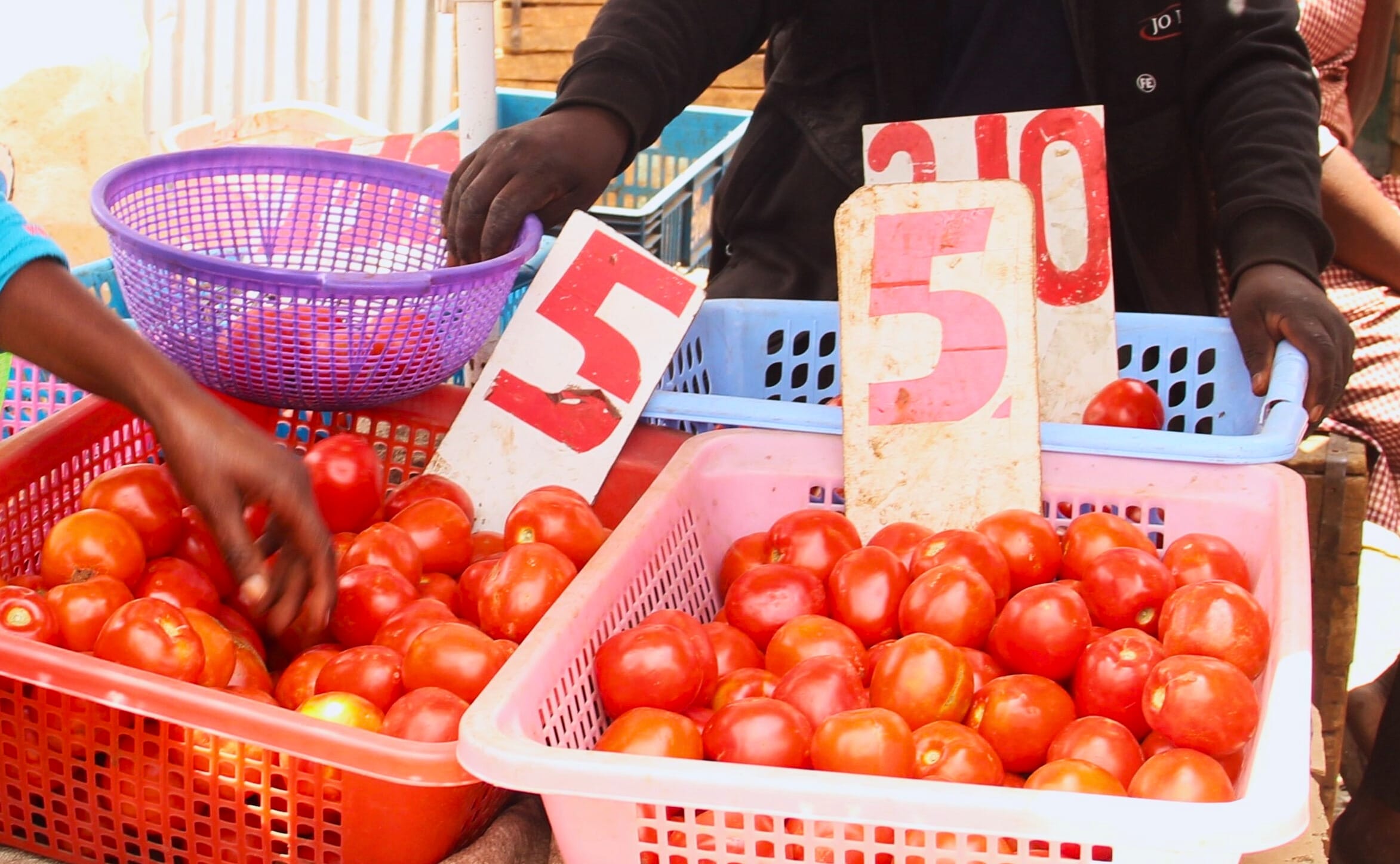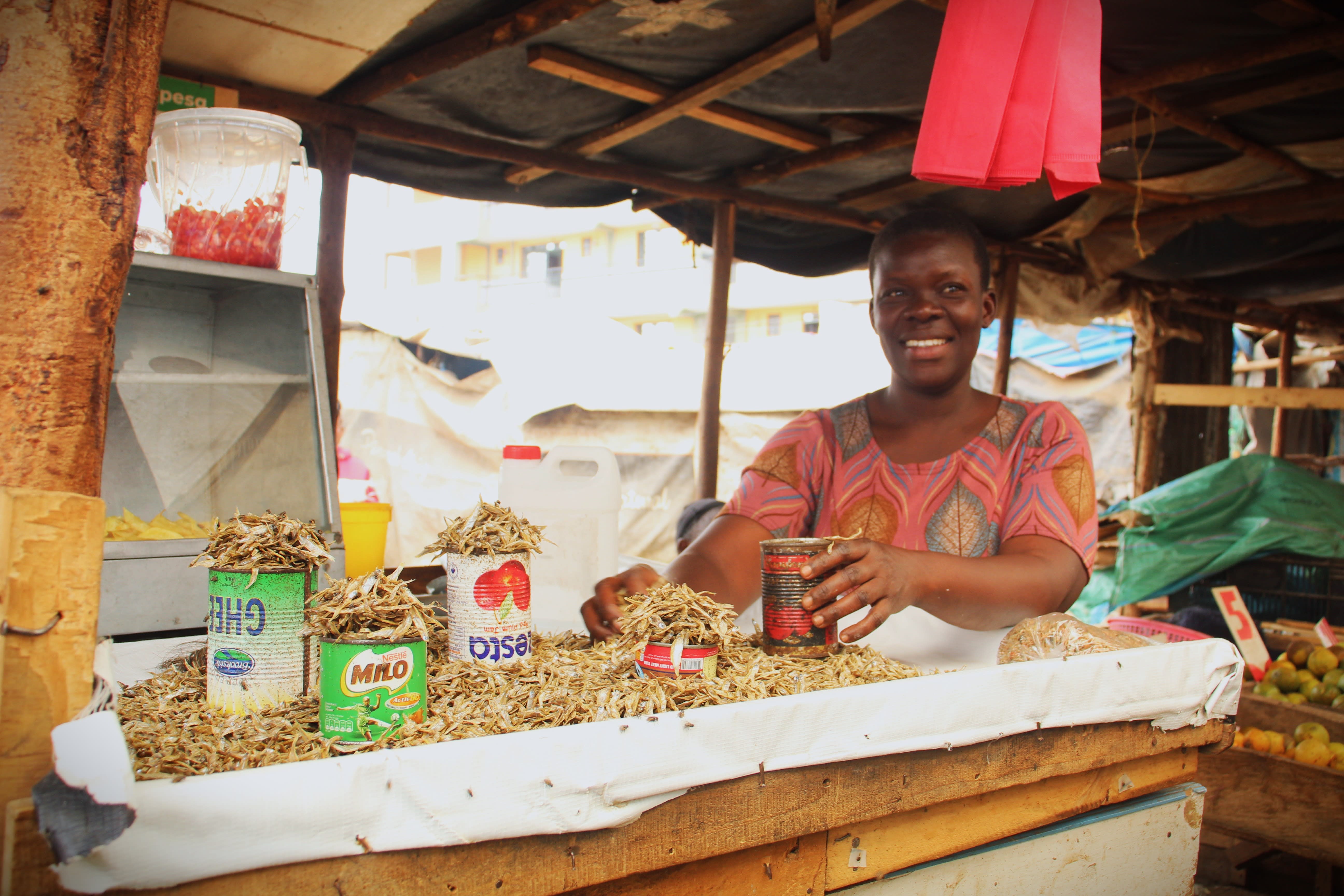Building Our Food Systems Back Better
What is required to make food systems provide sufficient, healthy food while not harming the planet? How should food security be maintained given the threat posed by climate change?
by Alexander Müller and Jes Weigelt | 2020-06-30

Writing about a crisis that is still unfolding, can only be premature. Uncertainty abounds. Reflections on both the impacts of and responses to the COVID-19 pandemic therefore benefit from modesty. At the same time, significant investment volumes are being made available to soften the impact of the COVID-19 pandemic and the responses to it. Actions are necessary now and are being taken. So, in the below, we would like to offer our reading of how to make food systems more resilient while building back better. Trying to strike a balance between modesty and clarity, we wish to ask our readers to please understand these considerations as the beginning and not the end of the story. We would like to extend an invitation to contribute to a discussion on how to make the food system work for both people and the planet. Today, it is failing to provide healthy food for all while at the same time degrading the planet.
By now, it is a well-established fact that COVID-19 is not only a health crisis but also an economic and food security crisis.
This brief article focuses on building our food system back better. By now, it is a well-established fact that COVID-19 is not only a health crisis but also an economic and food security crisis. The pandemic left rural producers without a market. Export-oriented agricultural businesses quickly dismissed agricultural labourers. The Kenyan flower industry is but one example.
Responses to curb the further spread of the pandemic have undermined food access by already poor and food insecure people. The World Food Programme warns that 265 million people will be threatened by acute hunger by the end of this year; that is twice as much as estimated prior to the outbreak of COVID-19. The pandemic, as some observers have commented, has laid open some of the structural flaws of the food system.
So, building back the food system needs to be done in a way that existing flaws in or threats to the system are addressed. Building back better also means preparing the food system for the next crisis on the horizon, the impact of the climate crisis. At the same time, building back better must not mean to continue business as usual with more resources being made available by governments!
Our skewed food systems
A cursory look at the food systems shows both internal shortcomings and massive external threats:
- The way agriculture is being conducted is leading to a loss of biodiversity and resource degradation.
- More than 800 million people are food insecure, a figure that has kept rising since 2015. Obesity and malnutrition are omnipresent in so called developing and developed countries.
- The inequalities in the food system are striking. Gender inequalities in access to assets and frequent violation of migrant workers’ rights are only two examples in this regard.
- Even at the current roughly 0.8 °C increase in global mean temperature, the temperature increase over land is 1.27 °C. Climate change is already leading to yield depressions of major crops.
Building back cannot mean going back to before, it must mean building back better for a new normal.
Building back better – elements of a strategy
Current investments to combat the immediate impact of the COVID-19 pandemic and the measures to curb it must address the needs of the food insecure and the vulnerable. They must also be done in a way that they increase the adaptive capacity of those suffering from food insecurity and enhance the resilience of the food system as a whole. The responses to curb the further spread of the pandemic have highlighted some elements of particular importance to achieve urban and rural food security in the future:
One Health. As an immediate conclusion from the COVID-19 pandemic, the concept of One Health is receiving renewed attention. One Health denotes efforts to achieve public health by paying attention to the transmission of diseases from animals to humans and the impact of environmental factors on human health. In short, human health is to be achieved by making sure that animals and the broader environment are healthy as well. In the further development of One Health, it will be important to live up to the integrative nature of the concept. To provide a – potentially simplistic – example, it is of only little value to ensure proper vaccination of livestock against some well-known diseases if the conditions for keeping them, such as high density of animals, create new breeding grounds for diseases. These conditions are not conducive to animal wellbeing in the long run and often rely on the massive application of antibiotics. In conditions such as these, new threats are likely to emerge for human and animal health.
Although this is a well-established fact, it is not triggering the necessary action! One Health needs to be designed and implemented in broad terms of human and animal health, within the broader production system, which in turn is embedded in a sustainably managed environment. To apply a concept that is typically used in a different context, truly achieving One Health requires a landscape approach – a landscape approach that is based on cooperation among different actors and openness for new solutions.
The informal sector in urban food systems. The informal sector is of outmost importance as a way for poor people to access food. Yet, this has been one of the sectors particularly hard hit by lockdown measures. Open air markets were closed, and informal food trading was prohibited. This has further undermined food access by the poor. In addition, as they could more easily implement physical distancing regulations, supermarkets often remained open. It is yet too early to see whether this exacerbates inequalities in food systems. It is not too early to conclude, however, that food security policies need to embrace the pivotal role of both the formal and informal sectors to achieve urban food security. Even in highly industrialised countries, the informal food sector has to solve the problems of the highly commercialised food sector. For example, the formal food sector in the USA would never have managed to feed millions of unemployed people. Acknowledging the continued higher prevalence of food insecurity in rural areas and taking into account the high urbanisation rates in developing countries, food security policies need to learn from the impact of COVID-19 and question its productionist and rural biases. As urban geographer Jane Battersby observes: “While the urban has been largely absent in the global discourse on food and nutrition security, food has been equally absent from the global discourses on urban development.” To brace food systems for the next crises, these productionist and rural biases need to be rectified.
Urban agriculture. Measures to curb the further spread of the pandemic have interrupted or inhibited the marketing of fresh produce in cities. In effect, the price for vegetables in cities increased considerably with the advent of the lockdown. Partners from Burkina Faso reported threefold increases on the markets in Ouagadougou. Agriculture in urban and peri-urban areas offers the opportunity to create employment and produce vegetables and fruits closer to urban centres. This potential is increased by emerging low-tech solutions for hydroponics. Not only does urban agriculture have nutritional and income benefits, it also offers social benefits. Analyses from the Cape Flats in Cape Town, South Africa, show that women practising urban agriculture perceive this to increase their “social image”.
Moving horticultural production to controlled environments in peri-urban and urban areas is also advantageous from the point of view of adapting to climate change. The number of extreme weather events is projected to increase significantly. Production in controlled environments can contribute to reducing the vulnerability of production. Clearly, to succeed in densely populated peri-urban and urban areas, agriculture requires corresponding investments in urban land use planning and securing long-term land use rights for urban and peri-urban production sites. Securing the natural resource base of agricultural production. If enhancing resilience of the food systems partly means shorter value chains, it also implies protecting the natural resource base for agriculture. Protecting freshwater resources and soils is an inherently local activity. Measures to implement national plans to achieve land degradation neutrality (LDN) are therefore key to achieving resilient food systems. However, this requires that they do not threaten food security by undermining the legitimate rights to land of small urban and rural agricultural producers, a risk that parties to the United Nations Convention to Combat Desertification (UNCCD) have begun to address by their landmark decision emphasising the importance of the Voluntary Guidelines on Responsible Land Governance. In their responses to the pandemic, it seems to be a good point in time for parties to start implementing them.
Securing the natural resource base of agricultural production. If enhancing resilience of the food systems partly means shorter value chains, it also implies protecting the natural resource base for agriculture. Protecting freshwater resources and soils is an inherently local activity. Measures to implement national plans to achieve land degradation neutrality (LDN) are therefore key to achieving resilient food systems. However, this requires that they do not threaten food security by undermining the legitimate rights to land of small urban and rural agricultural producers, a risk that parties to the United Nations Convention to Combat Desertification (UNCCD) have begun to address by their landmark decision emphasising the importance of the Voluntary Guidelines on Responsible Land Governance. In their responses to the pandemic, it seems to be a good point in time for parties to start implementing them.
Agroecological approaches for food security. There is overwhelming evidence that the current way of producing food more often than not undermines the very ecological basis of its own existence. Estimates of the negative externalities of the food system amount to 12 trillion US dollars annually. A resilient food system maintains and enhances the ecosystem services on which it relies. Diversification of production and reducing the reliance on external inputs have demonstrably increased the adaptive capacity of households. In short, agroecological practices enhance food system resilience. Yet, systemic approaches to food and nutrition security do often not find an enabling environment. Building our food system back better implies a revision of the agricultural and food and nutrition security policies along the four dimensions of food security: availability, access, utilisation and stability.
Rural governance for an enabling environment for food security and sustainable natural resource management. We have elaborated earlier on the importance of an enabling environment for rural development. Rural service delivery systems, the responsible design of rights to land and natural resources, and creating linkages between producers and consumers are all key to sustaining investments in sustainable land management, ecosystem-based adaptation, and other measures to protect and sustainably manage terrestrial ecosystems for food security.
Securing women’s land rights is particularly important in this context, as their investments in soil fertility affect household food and nutrition security disproportionately strongly. Investing in such an enabling environment means securing the investments to achieve food security and sustainable resource use.
The time is now
This list of strategy elements is a contribution to the on-going discussions on building back better. It is unlikely to be comprehensive. Yet, we have derived these elements from the reports by partners and colleagues from ten African countries which are presenting their impressions on the daily struggle for food on our Twitter platform @CovidFoodFuture. And we have collated this list with a view to address trends that undermine the resilience of food systems and with the next upcoming crisis in mind, the impact of climate change on all four dimensions of food security. So, while the list might seem eclectic, the overarching message is rather straightforward: For some regions and crops, we are only ten harvests away from meeting or failing to meet the Sustainable Development Goals. As it stands, the odds are not in the SDGs’ favour. Given the level of investments currently mobilised to soften the impact of the COVID-19 pandemic, it would be a huge opportunity lost, if they were not invested in a way to make our food systems more resilient, if they were not invested to increase the adaptive capacity of those whom we have committed “to not leave behind”.
 Urban Food FuturesSep 29, 2025
Urban Food FuturesSep 29, 2025Cheaper food, higher costs: The paradox of Nairobi’s food systems
What are the hidden costs of foods sold in Nairobi's informal markets, and who must bear them? We discuss how the city could build food systems that are both affordable and fair—for consumers and the people who feed them.
Christian Sonntag, Emmanuel Atamba, Lumi Youm
 Land GovernanceJun 26, 2025
Land GovernanceJun 26, 2025Did 2024 - the year of the triple COP - change anything for land rights?
What did this “triple COP” moment really deliver for land rights? Can we keep the momentum up to advance gains made and push for bolder action?
Frederike Klümper
 Urban Food FuturesJun 20, 2025
Urban Food FuturesJun 20, 2025Working with informality: A hidden path to Zero Hunger
Global progress on Zero Hunger is faltering, but a powerful, overlooked solution exists: working with informality. Supporting the networks already feeding cities and sustaining communities can drive progress not only on hunger, but across multiple SDGs.
Jes Weigelt

